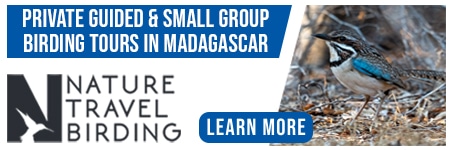Republic of Madagascar
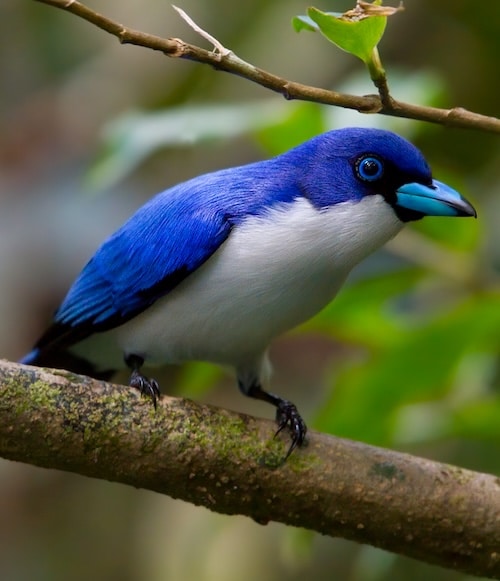
Madagascar is an island nation that includes the island of Madagascar and numerous smaller peripheral islands. Neighbouring islands include the French territory of Réunion and the country of Mauritius to the east, as well as the state of Comoros and the French territory of Mayotte to the north west. The nearest mainland state is Mozambique, located to the west. Lying off the southeastern coast of Africa, it is the world’s fourth largest island (after Greenland, New Guinea, and Borneo), the second-largest island country (after Indonesia), and the 46th largest country overall covering nearly 593,000 km2 (c. 229,000 square miles). It has a population of around 32.75 million people, 4.3 million of whom live in its capital and largest city; Antananarivo.
The long history of separation from other continents has allowed plants and animals on the island to evolve in relative isolation. Along the length of the eastern coast runs a narrow and steep escarpment containing much of the island’s remaining tropical lowland forest. To the west of this ridge lies a plateau in the center of the island ranging in altitude from 750 to 1,500 m (2,460 to 4,920 ft) above sea level. These central highlands, traditionally the homeland of the Merina people and the location of their historic capital at Antananarivo, are the most densely populated part of the island and are characterised by terraced, rice-growing valleys lying between grassy hills and patches of the sub-humid forests that formerly covered the highland region. To the west of the highlands, the increasingly arid terrain gradually slopes down to the Mozambique Channel and mangrove swamps along the coast.

Mozambique Channel Mangroves – ©Smiley.toerist CC BY-SA 3.0 via Wikimedia Commons
Madagascar’s highest peaks rise from three prominent highland massifs: Maromokotro 9,436 feet in the Tsaratanana Massif is the island’s highest point, followed by Boby Peak 8,720 feet in the Andringitra Massif, and Tsiafajavona 8,671 feet in the Ankaratra Massif. To the east, the Canal des Pangalanes is a chain of human-made and natural lakes connected by canals built by the French just inland from the east coast and running parallel to it for some 600 km.
The western and southern sides, which lie in the rain shadow of the central highlands, are home to dry deciduous forests, spiny forests, and deserts and xeric shrub-lands. Due to their lower population densities, Madagascar’s dry deciduous forests have been better preserved than the eastern rain forests or the original woodlands of the central plateau. The western coast features many protected harbours, but silting is a major problem caused by sediment from the high levels of inland erosion carried by rivers crossing the broad western plains.
The combination of southeastern trade winds and northwestern monsoons produces a hot rainy season (November-April) with frequently destructive cyclones, and a relatively cooler dry season (May-October). Rain clouds originating over the Indian Ocean discharge much of their moisture over the island’s eastern coast; the heavy precipitation supports the area’s rainforest ecosystem. The central highlands are both drier and cooler while the west is drier still, and a semi-arid climate prevails in the southwest and southern interior of the island.

Central Highlands – ©Rod Waddington CC BY-SA 2.0 via Wikimedia Commons
Approximately 90% of all plant and animal species found in Madagascar are endemic. This distinctive ecology has led some ecologists to refer to Madagascar as the “eighth continent”, and the island has been classified by Conservation International as a biodiversity hotspot. Madagascar is classed as one of 17 mega-diverse countries. The country is home to seven terrestrial eco-regions: Madagascar lowland forests, Madagascar sub-humid forests, Madagascar dry deciduous forests, Madagascar ericoid thickets, Madagascar spiny forests, Madagascar succulent woodlands, and Madagascar mangroves.
Like its flora, Madagascar’s fauna is diverse and exhibits a high rate of endemism. Lemurs have been characterised as ‘Madagascar’s flagship mammal species’ by Conservation International. In the absence of monkeys and other competitors, these primates have adapted to a wide range of habitats and diversified into numerous species. 103 species and subspecies of lemur remain, 39 of which were described by zoologists between 2000 and 2008. They are almost all classified as rare, vulnerable, or endangered. At least 17 species of lemur have become extinct since humans arrived on Madagascar, all of which were larger than the surviving lemur species.
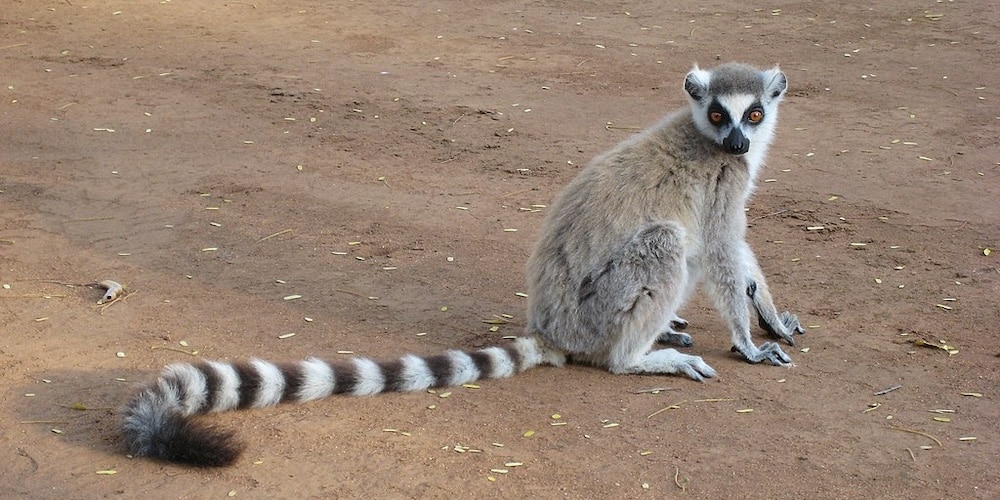
Ring-tailed Lemur Lemur catta at Berenty Private Reserve – ©Alex Dunkel (Maky) CC BY 3.0 via Wikimedia Commons
A number of other mammals, including the catlike fossa, are endemic to Madagascar. Over 300 species of birds have been recorded on the island, of which over 60 percent (including four families and 42 genera) are endemic if one includes endemic sub-species. The few families and genera of reptiles that have reached Madagascar have diversified into more than 260 species, with over 90 percent of these being endemic (including one endemic family). The island is home to two-thirds of the world’s chameleon species, including the smallest known.
Habitat destruction and hunting have threatened many of Madagascar’s endemic species or driven them to extinction. The island’s elephant birds, a family of endemic giant ratites, became extinct in the 17th century or earlier, most probably because of human hunting of adult birds and poaching of their large eggs for food. Areas protected by the state included five Strict Nature Reserves, 21 Wildlife Reserves and 21 National Parks. Six of the national parks were declared a joint World Heritage Site under the name Rainforests of the Atsinanana. These parks are Marojejy, Masoala, Ranomafana, Zahamena, Andohahela and Andringitra.
Birding Madagascar
Some of the world’s most fascinating and endangered birds are endemic to Madagascar. Yet for its size – and considering its profusion of habitat types – Madagascar has relatively few bird species (only about 265). But it holds more endemic genera (37) than any other African country and its 120 endemic species include 5 endemic families, (2 have representatives in the Comoros) and 1 endemic subfamily. Another 25-odd species belong to interesting genera unique to the Western Indian Ocean islands.
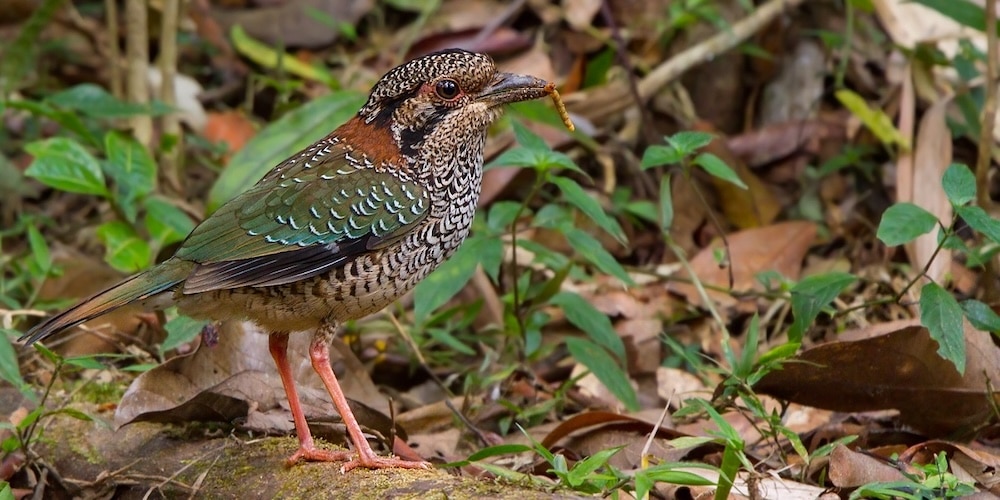
Scaly Ground Roller Geobiastes squamiger – ©Dubi Shapiro
To see the bulk of Madagascar’s birds, you’ll need to visit at least 1 site in each of the island’s 3 chief climatic/floristic zones: eastern rainforest, southern spiny bush and western tropical deciduous forest. Each of these holds its own complement of endemics. In addition, a select band of birds is dependent on the island’s dwindling wetlands, so be sure to include certain more accessible marshes, lakes and estuaries in your itinerary. Most birders also visit the transition forest of Zombitse National Park. During a stay of 2-3 weeks, and armed with an excellent field guide (Birds of Madagascar and the Indian Ocean Islands by Frank Hawkins, Roger Safford & Adrian Skerrett – Helm 2015); you should be able to tick off most of the sought-after lifers, as well as a remarkable array of mammals, reptiles, frogs, invertebrates and the fascinating flora.
When to go: Birders tend to visit in the Malagasy spring and early summer, that is from the very end of August to December. In the winter months (May – mid August), the rainforests can be very quiet and many sought-after endemics extremely furtive. Also, in winter some of the more spectacular endemics like asities, will be out of their impressive breeding regalia. Because lodges and hotels are fairly small at most of the birding venues, it is sensible to plan your trip fairly long in advance, to avoid disappointment. Below is a review of the Birding Hotspots.
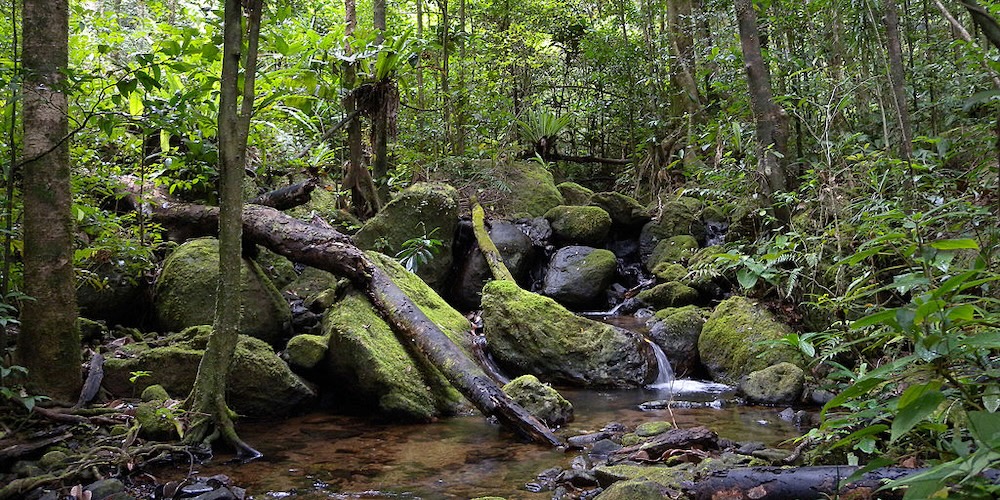
Lowland Rainforest, Masoala National Park – ©Frank Vassen CC BY 2.0 via Wikimedia Commons
Eastern Rainforest The now highly fragmented rainforest band known as the ‘Great Madagascar Sylva’, once covered almost all of humid eastern Madagascar. Some impressive rainforest blocks remain intact today and in these are situated several splendid National Parks which attract birders from around the globe. Malagasy rainforest birding is best in the Austral Spring and early summer (end August to late December). Always be sure to enter the rainforest just before daybreak, as then birding becomes really rewarding. And if it rains while you’re in there, don’t be deterred! As the local saying goes, it takes a lot of rain to have a good rainforest flourishing and rainforest-dependent wildlife tends to be just as active during rainy spells. This habitat is the island’s richest by far and holds four of the five ground rollers, three of the four asities and most of the vangas and Malagasy greenbuls.
Tropical Dry Deciduous Forest The hot western lowlands of Madagascar hold the last few stands of tropical dry deciduous forest. Here, woods are much lighter and birding is rewarding year-round.
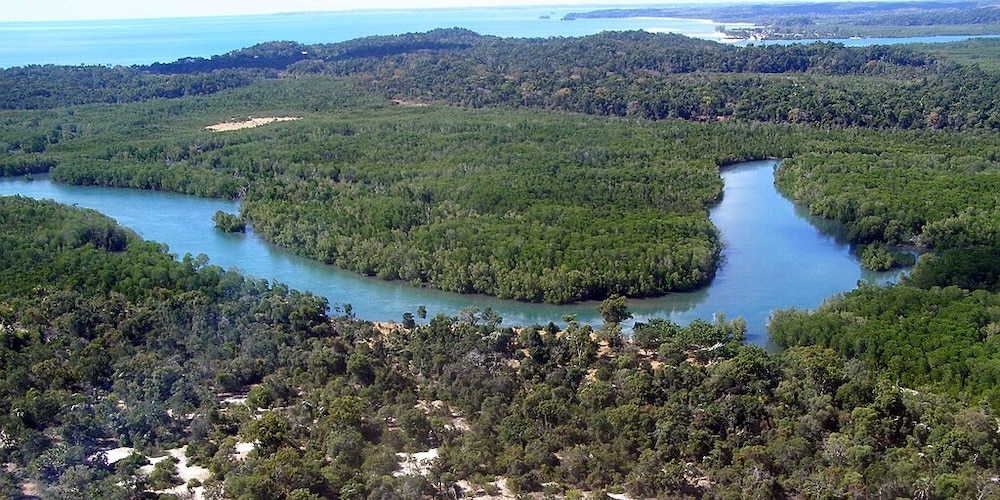
Dry Deciduous Forest, Anjajavy Forest – Public Domain, via Wikimedia Commons
Transition Forest Straddling the RN7 national road between the Isalo sandstone mountains and the south-west coastal town Tulear is the transition forest of Zombitse, where western and southern forest types merge. The mega-tick in this very rewarding 21,500ha birding hotspot is the Appert’s Greenbul, which is almost entirely restricted to this protected area. You should also see a wide variety of other endemics, including Madagascar Sandgrouse, Madagascar Partridge, Giant and Coquerel’s Couas, Lesser Vasa Parrot, Madagascar Hoopoe, Common Newtonia, Common Jery, Long-billed Green & Souimanga Sunbirds and Sakalava Weaver. Zombitse makes for an ideal picnic stop and birding is excellent there all year.
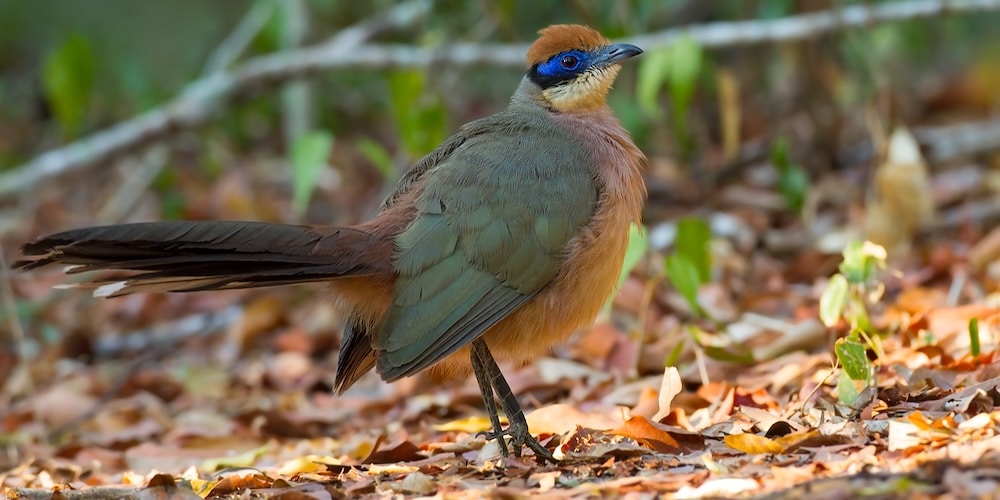
Red-capped Coua Coua ruficeps – ©Dubi Shapiro
Southern sub-arid thorn thicket (spiny bush) This bizarre habitat features an assemblage of bloated and thorny, drought-resistant trees and plants. It varies considerably in appearance across the region. All the southern sub-desert endemics are concentrated in a small area along the southwest coast, from Ifaty Beach to St Augustin Bay. Birding in the semi-arid south is good year-round.
-
Eastern Rainforest - Masoala National Park
InformationSatellite ViewExceptional birding is to be had in this park, which protects the largest remaining Malagasy lowland rainforest. Aside from nearly all the broadly distributed rainforest endemics, specials like the Brown Mesite, Red-breasted Coua, Scaly Ground-roller and the Helmet and Bernier's Vangas, abound. 2 extremely rare species; the Madagascar Serpent Eagle and Madagascar Red Owl, find sanctuary here. (Seeing either of these is never guaranteed however, as they are exceedingly elusive). Masoala is usually offered as an optional extension to the standard birding tour. -
Eastern Rainforest - Perinet Reserve & Mantadia National Park
InformationSatellite ViewUsually, this readily accessible montane rainforest (3 hours drive east of Antananarivo) provides a perfect introduction to Madagascar birding. A 3-day stay here will allow you to explore Perinet, the nearby Mantadia National Park and also one of the local marshes. In Perinet (Analamazaotra/Andasibe) itself, you should tick off many generally distributed Malagasy endemics. Local specials include the Red-fronted Coua, Rand's Warbler, Coral-billed Nuthatch Vanga and Tylas. With luck, you'll see Madagascar Wood-rail, Madagascar Flufftail and Collared Nightjar.A second day in the area should be used for the 10,000 ha Mantadia National Park, a great example of primary montane rainforest. This new park is deservedly becoming one of Madagascar's most visited birding hotspots. Its denizens include all 4 the rainforest-dwelling ground-rollers, the 3 oxylabes, all 3 rainforest-dependent asitys, Forest Rock-thrush and Brown Emutail. The bizarre Helmet Vanga is now known to occur there too.NB Two marshes in the area - Torotorofotsy and Ampasipotsy - hold Meller's Duck, Madagascar Snipe, Madagascar Rail, Grey Emutail and Madagascar Swamp Warbler, among others. This is possibly the best place in which to seek the ultra rare Slender-billed Flufftail. -
Eastern Rainforest - Ranomafana National Park
InformationSatellite ViewThis very beautiful montane rainforest was declared a national park in the 1980s, primarily to protect various species of Lemur. It is arguably the island's single best rainforest birding locality. The ideal length of stay is 3 days, which will allow for time to take in some of the half-day or day walks in the park. Resident birds include the wary Brown Mesite, Henst's Goshawk and Madagascar Long-eared Owl. But heading the wish-lists of most birders are the 4 rainforest dwelling ground rollers. Of these, the pittalike, Rufous-headed and Short-legged are particularly frequently seen in Ranomafana. Other megaticks here include Velvet Asity, Common Sunbird Asity and all 3 oxylabes (Crossley's Babbler, White-throated Oxylabes and the rare, localised Yellow-browed Oxylabes); the Gray-crowned Greenbul, Forest Rock-thrush and Pollen's Vanga. Up on the high ridges, look for the Yellow-bellied Sunbird Asity, Brown Emutail and recently described Cryptic Warbler. At the nearby Vohiparara marsh, you might see the Madagascar Rail, Madagascar Flufftail, Grey Emutail and even the elusive Slender-billed Flufftail. -
Spiny Bush - Ifaty Beach
InformationSatellite View29km north of the town Tulear by deeply rutted road you will find Ifaty Beach, the most important birding locality of the dry south.Here the euphorbia-didieraceae bush is at its tallest, with bottle baobabs and octopus trees being prominent features. Highly localised megaticks include the sub-Desert Mesite and Long-tailed Ground-roller as well as LaFresnaye's Vanga and Archbold's Newtonia. Look also for the Running Coua and Sub-desert Brush-warbler. Ifaty is also an excellent place in which to seek the uncommon Banded Kestrel, as well as the White-browed Owl (before dawn); Madagascar Nightjar and Madagascar Buttonquail. -
Spiny Bush - St Augustin Bay
Satellite View30kms south of Tulear is St Augustin Bay, where the vegetation is considerably lower than that in Ifaty. It is referred to as coral ragg scrub. The impressive baobabs and octopus trees are replaced by much bushy euphorbia and some bloated moringa trees. This is the best place in which to look for far southern specials like Verreaux' Coua, Littoral Rock-thrush and the recently described Red-shouldered Vanga. When passing small roadside puddles, keep an eye open for the increasingly rare Madagascar Plover. -
Tropical Dry Deciduous Forest - Ankarafantsika Reserve & Ampijoroa Forest Station
WebsiteSatellite ViewThe place included on all birders itineraries is Ampijoroa Forest Station, the tourist-accessible part of the Ankarafantsika Reserve. The local specials are mostly not hard to find: look for White-breasted Mesite, Coquerel's and Red-capped Couas and Van Dam's Vanga. Less easily seen is the Schlegel's Asity. Several vangas are quite common, including the Sicklebill, Rufous, Hook-billed, Blue and Chabert's Vangas. Raptors abound, including the very rare Madagascar Fish Eagle, Madagascar Gymnogene, Madagascar Buzzard, Madagascar Sparrowhawk and Frances's Sparrowhawk. More generally distributed species often encountered here include Madagascar Crested Ibis, White-throated Rail, Greater Vasa Parrot, Madagascar Green Pigeon and Madagascar Pygmy Kingfisher. At nearby wetlands, you might find Humblot's Heron, Madagascar White Ibis, Madagascar Jacana, Madagascar Pratincole and if you are very lucky, the rare Madagascar (Bernier's) Teal. (If you have a day to spare in the Mahajanga area, a boat excursion into the Bombetoka Bay may also deliver the wetland endemics).
-
Derek Schuurman
| dschuurman@rainbowtours.co.uk
https://www.rainbowtours.co.uk/country/madagascar-holidays/ -
Ken Behrens
Madagascar | ken.behrens@gmail.com
https://www.flickr.com/photos/kbehrens/albums/72157690287060584/with/27378396839/
-
Number of bird species: 311
(As at February 2025)
Number of endemics: 110
Madagascar Partridge Margaroperdix madagarensis
Meller's Duck Anas melleri
Bernier's Teal Anas bernieri
Madagascar Pochard Aythya innotata
Madagascar Hoopoe Upupa marginata
Short-legged Ground-Roller Brachypteracias leptosomus
Scaly Ground-Roller Brachypteracias squamigera
Pitta-like Ground-Roller Atelornis pittoides
Rufous-headed Ground-Roller Atelornis crossleyi
Long-tailed Ground-Roller Uratelornis chimaera
Madagascar Pygmy-Kingfisher Ispidina madagascariensis
Madagascar Cuckoo-shrike Ceblepyris cinereus
Giant Coua Coua gigas
Coquerel's Coua Coua coquereli
Red-breasted Coua Coua serriana
Red-fronted Coua Coua reynaudii
Running Coua Coua cursor
Red-capped Coua Coua ruficeps
Crested Coua Coua cristata
Verreaux's Coua Coua verreauxi
Blue Coua Coua caerulea
Chestnut-vented Coua Coua pyropyga
Olive-capped Coua Coua olivaceiceps
Grey-headed Lovebird Agapornis canus
Lesser Vasa (Black) Parrot Coracopsis nigra
Madagascar Red Owl Tyto soumagnei
White-browed Hawk-Owl Ninox superciliaris
Madagascar Long-eared Owl Asio madagascariensis
Madagascar Scops Owl Otus rutilus
Collared Nightjar Caprimulgus enarratus
Madagascar Blue-Pigeon Alectroenas madagascariensis
Madagascar Green-Pigeon Treron australis
Magagascar (Kioloides) Wood-rail Canirallus kioloides
Madagascar Flufftail Sarothrura insularis
Slender-billed Flufftail Sarothrura watersi
Madagascar Rail Rallus madagascariensis
Tsingy Wood-rail; Mentocrex beankaensis
Sakalava Rail Amaurornis olivieri
Madagascar Crested Ibis Lophotibis cristata
White-breasted Mesite Mesitornis variegata
Brown Mesite Mesitornis unicolor
Subdesert Mesite Monias benschi
Madagascar Sandgrouse Pterocles personatus
Madagascar Snipe Gallinago macrodactyla
Madagascar Jacana Actophilornis albinucha
Black-banded Plover Charadrius thoracicus
Madagascar (Cuckoo-hawk) Baza Aviceda madagascariensis
Madagascar Fish-Eagle Haliaeetus vociferoides
Madagascar Serpent-Eagle Eutriorchis astur
Madagascar Harrier-hawk Polyboroides radiatusr
Madagascar Sparrowhawk Accipiter madagascariensis
Henst's Goshawk Accipiter henstii
Madagascar Buzzard Buteo brachypterus
Banded Kestrel Falco zoniventris
Alaotra Grebe Tachybaptus rufolavatus
Madagascar Grebe Tachybaptus pelzelnii
Velvet Asity Philepitta castanea
Schlegel's Asity Philepitta schlegeli
Sunbird Asity Neodrepanis coruscans
Yellow-bellied Asity Neodrepanis hypoxantha
Ward's Shrike-flycatcher Pseudobias wardi
Red-tailed Vanga Calicalicus madagascariensis
Red-shouldered Vanga Calicalicus rufocarpalis
Rufous Vanga Schetba rufa
Hook-billed Vanga Vanga curvirostris
Lafresnaye's Vanga Xenopirostris xenopirostris
Van Dam's Vanga Xenopirostris damii
Pollen's Vanga Xenopirostris polleni
Sickle-billed Vanga Falculea palliata
White-headed Vanga Artamella viridis
Chabert's Vanga Leptopterus chabert
Bernier's Vanga Oriolia bernieri
Helmet Vanga Euryceros prevostii
Tylas Vanga Tylas eduardi
Nuthatch Vanga Hypositta corallirostris
Forest Rock-Thrush Pseudocossyphus sharpei
Littoral Rock-Thrush Pseudocossyphus imerinus
Madagascar Magpie-Robin Copsychus albospecularis
Madagascar Starling Hartlaubius aurata
Long-billed Bernieria (Tetraka\Greenbul) Berneria madagascariensis
Spectacled Greenbul (Tetraka) Phyllastrephus zosterops
Appert's Greenbul (Tetraka) Phyllastrephus apperti
Dusky Greenbul (Tetraka) Phyllastrephus tenebrosus
Grey-crowned Greenbul (Tetraka) Phyllastrephus cinereiceps
Cryptic Warbler Cryptosylvicola randrianasoloi
Brown Emu-tail Dromaeocercus brunneus
Grey Emu-tail (Madagascar Grassbird) Dromaeocercus seebohmi
Sub-desert Brush-Warbler Nesillas lantzii
Thamnornis (Warbler) Thamnornis chloropetoides
Madagascar Swamp-Warbler Acrocephalus newtoni
Rand's Warbler Randia pseudozosterops
Northern Dark Newtonia Newtonia amphichroa
Common Newtonia Newtonia brunneicauda
Archbold's Newtonia Newtonia archboldi
Red-tailed Newtonia Newtonia fanovanae
Common Jery Neomixis tenella
Green Jery Neomixis viridis
Stripe-throated Jery Neomixis striatigula
Sub-desert Jery Neomixis pallidior
Wedge-tailed Jery Hartertula flavoviridis
White-throated Oxylabes Oxylabes madagascariensis
Yellow-browed (Warbler) Oxylabes Crossleyia xanthophrys
Crossley's Babbler (Vanga) Mystacornis crossleyi
Madagascar Lark Mirafra hova
Madagascar Wagtail Motacilla flaviventris
Nelicourvi Weaver Ploceus nelicourvi
Sakalava Weaver Ploceus sakalava
Red Fody Foudia madagascariensis
Forest Fody Foudia omissa
Madagascar Munia Lemuresthes nana
Number of endemics: 3 Breeding Endemics
Madagascar Heron Ardea humblotia
Madagascar Pratincole Glareola ocularis
Madagascar Cuckoo Cuculus rochii
-
Avibase
PDF ChecklistThis checklist includes all bird species found in Madagascar , based on the best information available at this time. It is based on a wide variety of sources that I collated over many years. I am pleased to offer these checklists as a service to birdwatchers. If you find any error, please do not hesitate to report them. -
E-Bird
PDF ChecklistThis checklist is generated with data from eBird (ebird.org), a global database of bird sightings from birders like you. If you enjoy this checklist, please consider contributing your sightings to eBird. It is 100% free to take part, and your observations will help support birders, researchers, and conservationists worldwide. -
Wikipedia
Annotated ListOf the 311 bird species recorded on Madagascar, 109 are found nowhere else on earth, and a handful of others are shared only with the neighbouring Comoro Islands, 2 have been declared extinct, 36 are globally threatened, 7 species are introduced by humans.
-
A Field Guide to the Birds of Madagascar
| By S Yamagishi, T Masuda & H Rakotomanana | Kaiyusha Publishers Co | 1997 | Paperback | 158 pages, colour illustrations | Text Japanese | ISBN: 9784905930815 Buy this book from NHBS.com -
Birds of Madagascar - A Photographic Guide
| By Pete Morris, Frank Hawkins & Mark Andrews | Pica Press | 2000 | Hardback | 316 pages, 450 colour photos, maps | Out of Print | ISBN: 9781873403457 Buy this book from NHBS.com -
Birds of Madagascar and the Indian Ocean Islands
| By Frank Hawkins, Roger Safford, Adrian Skerrett, John Gale & Brian Small | Christopher Helm | 2015 | Hardback | 336 Pages | 124 Colour plates with colour illustrations; ~350 colour distribution maps | ISBN: 9781472924094 Buy this book from NHBS.com -
Birds of the Indian Ocean Islands
| (Madagascar, Mauritius, Réunion, Rodrigues, Seychelles and the Comoros) | By Ian Sinclair, Olivier Langrand, Norman Arlott, Hilary Burn, Peter Hayman & Ian Lewington | New Holland Publishers | 2013 | Paperback | 264 pages, 71 plates with 1160 colour illustrations; colour distribution maps | Out of Print | ISBN: 9781431700851 Buy this book from NHBS.com -
Birds of the Indian Ocean Islands - Oiseaux des îles de l'Océan Indien
| By Olivier Langrand, Ian Sinclair, Norman Arlott, Hilary Burn, Peter Hayman, Ian Lewington | Delachaux et Niestle | 2014 | Paperback | 264 pages, 105 plates with colour illustrations; colour distribution maps | Text in French | ISBN: 9782603020234 Buy this book from NHBS.com -
The Endemic Birds of Madagascar
| By Guy Eldridge | WildSounds | 2008 | All Region DVD | 4 Discs, Runtime 5 hours | A Four DVD Set Featuring 130 Malagasy Endemic Species | Out of Print | ISBN: 9781898665199 Buy this book from NHBS.com -
Wildlife of Madagascar
| By Ken Behrens & Keith Barnes | WILDGuides | 2016 | Paperback | 345 pages, 900+ colour photos, colour distribution maps | ISBN: 9780691161716 Buy this book from NHBS.com
-
African Bird Club
WebsiteMadagascar's uniqueness is legendary and this is well reflected in its birds. Of the 280 species known from the island, an incredible 100 plus are entirely endemic to Madagascar and a further 20 or so are shared only with neighbouring South West Indian Ocean islands. Of greatest interest to itinerant birders are five endemic families, the mesites, asities, cuckoo-roller, vangas and the incomparable ground rollers, which make Madagascar an essential destination for anyone attempting to see all of the world's bird families -
Peregrine Fund
WebpageAid in Madagascar’s conservation of biodiversity, tropical forests, and wetland ecosystems by creating protected areas.
-
*Protected areas of Madagascar
InformationSatellite ViewThe protected areas network of Madagascar is managed by the Madagascar National Parks Association (PNM-ANGAP). The network includes three types of protected areas: Strict Nature Reserves (IUCN category Ia), National Parks (IUCN category II) and Wildlife Reserves (IUCN category IV). Map plus interactive links -
IBAs
WebpageSatellite ViewThe birds show a very high degree of endemism with several bird families endemic to Madagascar and the neighbouring Comoros Islands. Over 100 species out of a total of over 200 breeding species are endemic to Madagascar. There are few terrestrial migrants as Madagascar seems to be off the usual Palearctic / African flyway -
NP Amber Mountain
InformationSatellite ViewIt is one of the most biologically diverse places in all of Madagascar with seventy-five species of birds, twenty-five species of mammals, and fifty-nine species of reptiles are known to inhabit the park -
NP Andasibe-Mantadia
InformationSatellite ViewAndasibe-Mantadia National Park is a 155 square kilometre protected area, located about 150 km east of Antananarivo, consisting principally of primary growth forest in Alaotra-Mangoro Region in eastern Madagascar. To address the disappearing habitat threat, reserves have been created in the vicinity of Andasibe-Mantadia that balance resource extraction with environmental protection, and attempt to create economic and environmentally preferable alternatives to replacing native forests with eucalyptus and pine. -
NP Andohahela
InformationSatellite ViewThe park covers 760 km2 (293 sq mi) of the Anosy mountain range, the southernmost spur of the Malagasy Highlands and contains the last humid rainforests in the southern part of Madagascar. The variety of habitats within Andohahela is mirrored in the richness of species that are found there, and the park is the richest place in Madagascar for lemur. Fifteen species have been recorded, including two of Madagascar's most emblematic species, the ring-tailed lemur and Verreaux's sifaka. Some rare species of geckos, turtles and snakes are among the 67 species of reptiles found in the park, 130 species of birds and fifty species of amphibians. -
NP Andringitra
InformationSatellite ViewThe park is one of the most biologically diverse places in Madagascar, with many endemic species. The eastern flank of the massif is covered with humid forest, and humid grassland and scrub in the higher areas. On the western flank there is relatively dry forest. There are over one thousand species of plants, one hundred species of birds, and fifty-five species of frogs are known to inhabit the park. -
NP Ankarafantsika
InformationSatellite ViewThe park occupies about 135,000 hectares and consists of patches of thick dry tropical forest interspersed with less dense areas. There are also savannah, scrub and sandy eroded rock areas and some land is farmed by the indigenous Sakalava people. There are a number of lakes and the park is criss-crossed by tracks and paths. There are lodging facilities and guides are available to help visitors appreciate the wildlife and scenery. One hundred and twenty nine species of birds have been recorded in the park, more than half of them endemic to Madagascar. They include the Van Dam's vanga (Xenopirostris damii), the rufous vanga (Schetba rufa), the elusive banded kestrel (Falco zoniventris) and the more easily observed Madagascar fish eagle (Haliaeetus vociferoides) which can often be seen at Ravelobe Lake.[2] The endangered Madagascar heron (Ardea humbloti) can be seen at Lake Ravelobe. -
NP Baie de Baly
InformationSatellite ViewThe Baie de Baly National Park is the only known natural habitat of the critically endangered Angonoka tortoise or ploughshare tortoise (Astrochelys yniphora). There are also thirteen species of mammals, (six primates), 37 reptile species, eight amphibian species and 122 species of birds. There is also the Perrierbambus madagascariensis, an endemic bamboo. The poisonous tree, Erythrophleum couminga (locally named komanga) is also endemic to this region and can be found in and outside the park. It is a very hard wood but cannot be used for cooking as its fumes contain a poison. -
NP Isalo
InformationSatellite ViewA total of 340 faunal species are known to inhabit the area, including 82 species of birds, 33 species of reptiles, 15 species of frogs and 14 species of mammals. The many species of bird found here include Benson's rock thrush (Monticola sharpei bensoni), the knob-billed duck (Sarkidiornis melanotos) and the Madagascar ibis (Lophotibis cristata). -
NP Kirindy Mitea
InformationSatellite ViewIn this park are found eleven species of mammals of which ten are endemic. Among them are the Madame Berthe's mouse lemur (Microcebus berthae), the smallest primate in the world, which is only known from this park. Also the fossa (Cryptoprocta ferox), Madagascar's largest predator, and the lemurs only predator (apart from people). Other mammals endemic to the Menabe region include the giant jumping rat (Hypogeomys antimena) and the narrow-striped mongoose (Mungotictis decemlineata). There are also forty-seven species of birds (thirty-three endemic) and twenty-three species of reptiles -
NP Marojejy
InformationSatellite ViewIt covers 55,500 ha (214 sq mi) and is centered on the Marojejy Massif, a mountain chain that rises to an elevation of 2,132 m (6,995 ft). Access to the area around the massif was restricted to research scientists when the site was set aside as a strict nature reserve. The wealth of species of well-known groups of animals demonstrates the depth of the biodiversity found at Marojejy National Park. For example, 75 of the 118 species of birds (64%) found in or around Marojejy are forest-dwelling birds, a total that surpasses any other mountain site in Madagascar. All of these forest-dependent bird species are endemic to Madagascar and utilize the forest for some portion of their life-cycle. One of these birds is the Madagascar serpent-eagle (Eutriorchis astur). -
NP Masoala
InformationSatellite ViewThe Masoala peninsula is exceptionally diverse due to its huge size, and variety of habitats. Altogether, the park protects tropical rainforest, coastal forest, flooded forest, marsh, and mangrove. Three marine parks protect coral reefs and a dazzling array of marine life. -
NP Midongy du sud
InformationSatellite ViewThe 192,000 hectares (470,000 acres) park has the second largest rainforest on the island and is rich in endemic animals and plants, especially medicial plants. -
NP Ranomafana
InformationSatellite ViewRanomafana National Park is located in the Fianarantsoa Province of southeastern Madagascar, it is about 2 hours drive from the city of Fianarantsoa and about 10 hours drive from Antananarivo, the capital of Madagascar… -
NP Sahamalaza
InformationSatellite ViewSahamalaza National Park is in the northwestern part of Madagascar in Sofia region, with 26035 hectares. -
NP Tsimanampetsotsa
InformationSatellite ViewThe lake is part of a Ramsar site with a total area of 456,000 hectares (1,130,000 acres), although the surface of the lake is much smaller. The park takes its name from the brackish, soda-saturated lake. Due to the high salinity, there are no fish, but more than one hundred bird species are found within the park (of which thirty-five are endemic to Madagascar, including the Madagascan plover), including waders, ducks and flamingos. -
NP Zahamena Strict Reserve
InformationSatellite ViewThis Strict Nature Reserve was inscribed as a World Heritage Site in 2007 as part of the Rainforests of the Atsinanana. The park is habitat for 112 bird species, 46 reptile species, 62 species of amphibians and 48 species of mammals, including 13 species of lemurs. -
NP Zombitse-Vohibasia
InformationSatellite ViewNinety species of birds are known from the park, including thirty-eight endemic species. The park meets the Birdlife International criteria as an Important Bird Area. One species Appert's tetraka (also known as Appert's greenbul (Xanthomixis apperti) is classified with a conservation status of vulnerable on the IUCN Red List of Threatened Species. -
NR Ambatovaky
InformationSatellite ViewAmbatovaky Reserve is a tropical rainforest and wildlife reserve in the north-east of Madagascar (65,000 hectares (160,000 acres)). It is designated by Bird Life International as an Important Bird Area for the large number of endemic species of birds. -
NR Analamazaotra
InformationSatellite ViewAnalamazaotra Special Reserve is a wildlife reserve toward the northeast portion of the island, and is nearly centered between the coast. -
NR Berenty Reserve
WebsiteSatellite ViewThe Berenty Reserve was created half a century ago by the d'Heaulme family as a private park; in the last twenty years it has been turned into a nature reserve cum hotel. It is the easiest way to see Lemur catta and Propithecus verreauxi in the wild. Bordering the Mandrare river it is a small patch (100 hectares) of gallery and riverine forest in the middle of what used to be spiny forest and is now mostly sisal fields. The reserve is home to 5 species of lemur, a flying fox (a large fruit bat) and 96 bird species. -
NR Betampona Strict Reserve
InformationSatellite ViewIt is located 40 km northwest of Toamasina and was established in 1927. The area of the reserve is 29.2 km². -
NR Lokobe Strict Reserve
InformationSatellite ViewIt is known for its black lemurs and the beautiful Nosy Be panther chameleon. -
NR Tsaratanana Strict Reserve
InformationSatellite ViewThe reserve provides a significant amount of water to the area, and many rivers exist in the area, such as Bemarivo river, Sambirano river and the Ramena or Mahavavy River. -
NR Tsingy de Bemaraha Strict Nature Reserve
InformationSatellite ViewTsingy de Bemaraha Strict Nature Reserve is a nature reserve located near the western coast of Madagascar in Melaky Region at 18°40′S 44°45′E. The area was listed as a UNESCO World Heritage Site in 1990 due to the unique geography, preserved mangrove forests, and wild bird and lemur populations.
-
eBird
SightingseBirding This Month
-
Apex Expeditions
Tour OperatorMadagascar’s legendary uniqueness is reflected in its mammals, with every one of its 150 native terrestrial species being found nowhere else on the planet! Best known as the home of the lemurs, with an amazing 100 species divided over five endemic families, the island also boasts a host of colorful chameleons, fascinating flora and bizarre insectivores. Madagascar’s endemic birds are equally world renowned, with no fewer than 140 species and 5 complete families entirely restricted to this appropriately named “laboratory of evolution.” -
BirdFinders
Tour OperatorMadagascar's uniqueness is legendary and this is nowhere better reflected than in its birds. Of the 270 species recorded on the island no fewer than 140 are endemic or near-endemic and we will see the majority of them. -
BirdQuest
Tour OperatorThe tour that covers more of the Eighth Continent’s endemics than any other! -
Birding Ecotours
Tour OperatorBirding Tour Madagascar: 14-day Best of Madagascar Birding and Wildlife -
Birds & Birding Madagascar
Local Tour OperatorWe are a Malagasy tour company, based in Antananarivo with over 20 years experience as a Destination Management Company – DMC. With our expert birding team, you will be able to choose amongst our highly selected tours or have your tour customized as per your desire. -
Birds Wildlife & Nature
Tour OperatorOften referred to as the 8th continent of the world, this incredible island broke away from Africa over 95 million years ago, which then created this oasis of endemic wildlife found no where else on earth. -
Cactus Tours
Local Tour OperatorThe must-visited sites and must-see species are packed in this tours. -
FieldGuides
Tour OperatorIn-depth coverage of the accessible parts of Madagascar: many endemic birds, striking lemurs, bizarre flora and chameleons, fascinating culture. -
Madagascar Tour Guide
Local Tour OperatorThis Madagascar birding tour is very well set to see the Birds of Madagascar in the best sites for Birding in Madagascar. -
Madagaskar Travel
Local Tour Operator(21 days / 20 nights)This tour will take you the most important bird whatching areas in the west, east and south of Madagascar... -
Naturalist Journeys
Tour OperatorSearch for endearing lemurs, bizarre chameleons, otherworldly flora, and so much more. Madagascar is one of the world’s greatest destinations for birdwatchers and naturalists, alike; a Madagascar birding and wildlife tour is truly an experience of a lifetime. -
Nature Travel Africa
Tour OperatorOn our 14-Day Madagascar Birding Tour we will visit the Southern parts of Madagascar focussing on the endemic and near-endemic species. -
NatureTrek
Tour OperatorThe island of Madagascar has been isolated from mainland Africa for 165 million years, allowing evolution here to follow its own unique course. -
Remote Rivers
Tour OperatorAlthough greatly changed by man since 1771, Madagascar remains a truly wonderful country with unique wildlife, bizarre plants, superb climate, and the nicest people you will find anywhere. Even the cities and towns are fascinating, thanks to some inspired architecture and the Malagasy love for flowers, music, and warm colors… -
Rockjumper Birding Tours
Tour OperatorWe at Rockjumper are rightly considered the “Malagasy experts”, having run more tours to the island than all other birding companies combined! We offer a wide array of tours to the island, ranging from 12 days for our budget Essential tour, to our 22 day Comprehensive tour. -
Sunrise Birding
Tour OperatorOften referred to as the eighth continent of the world, Madagascar broke away from Africa over 95 million years ago... -
The Sustainable Birding Company
Tour OperatorThis tour is designed to highlight some of Madagascar's most remarkable birdlife and wildlife within a relatively brief period, considering the vastness of the island. -
Tropical Birding Tours
Tour OperatorMadagascar: Birding the Eighth Continent -
WINGS
Tour OperatorThe heaviest bird that ever existed, the Elephant Bird, lived in Madagascar and may actually have survived until only 300 years ago... -
Wild Birding Limited
Tour OperatorThere is simply no where like Madagascar.
-
2016 [10 October] - Adam Walleyn
PDF Report...The reeds and scrub surrounding the lake produced excellent views of the rather similar Malagasy Brush Warbler and Malagasy Swamp Warblers, really nice side by side comparisons! We then taped out an extremely cooperative White-throated Rail that we enjoyed at leisure. We also added our first of Malagasy Kingfisher, Malagasy Coucal, Common Jery, Malagasy White-eye and Souimanga Sunbird... -
2016 [11 November] - Adam Walleyn
Report PDFOur group gathered in Antananarivo, the capital city of Madagascar. We headed out for our first birdingexcursion to Lac Alarobia, a small wetland and RAMSAR site located within the heart of this denselypopulated city. We were greeted by large numbers of Red-billed Teal and White-faced Whistling Duck;while the heronry on the island in the middle of the lake was teeming with Dimorphic Egrets and SquaccoHerons... -
2016 [11 November] - Phil Gregory - Madagascar, Mauritius & Reunion
Report...The following day, we had a mission to see all of the special species. We began very well with a newly discovered nest of Schlegel's Asity, soon followed by White-breasted Mesite and eventually (after breakfast) a splendid Van Dam's Vanga -- a rare species that is easily missed. Coquerel's and Red-capped couas showed well. Western Woolly Lemur was a good find, as was Mongoose Lemur, whilst a nesting pair of Banded Kestrels was a major surprise and my first sighting in the park.... -
2017 [10 October] - Gareth Robbins
PDF Report...Finally, we arrived at our quaint lodge located just outside the Perinet Special Reserve. Whilst lavishing in lunch, we listened to the distant calls of the Indri and also saw Crested Drongo and Malagasy Bulbuls. We then met the famous Luc, who was to be our local guide for the nextfew days... -
2017 [11 November] - Phil Gregory & Doug Gochfeld
Report...we scored our only Madagascar Snipes of the tour along with a swirling mass of Plain (Brown-throated) Martins, and then on day two at the Reserve Villageoise D’Ankazomivady, where the highlight among introductions to several Madagascar endemic species was a scarce Baillon’s Crake! -
2018 [10 October] - János Oláh - Northern Madagascar & Comoro Islands.
PDF ReportThis was our fourth tour to explore some of the more remote areas of Northern Madagascar and the Comoro Islands. We were pioneers in the area back in 2008 but even nowadays very few birders visit the Comoros, and even fewer birding companies offer such a comprehensive tour. -
2018 [11 November] - Phil Gregory - Madagascar with Mauritius & Reunion
ReportThis was my ninth Field Guides Madagascar tour (eleventh overall), and was again a terrific trip with a very congenial fit group who were also very good at spotting. I have gradually fine-tuned this tour to eliminate as many Madagascar Air flights as possible, and we enjoyed close to an ideal itinerary this year. -
2019 [10 October] - Birding Ecotours - Jason Boyce
PDF ReportThe wonderful world that is Madagascar, the Eighth Continent! It’s easy to see why the world’s fourth-largest island has been given this name. There is a strong African influence in both Madagascar’s fauna and flora, but certainly there also is enough unique wildlife to justify a nickname such as this. -
2019 [12 December] - David Van den Schoor
PDF Report...Despite the fourth-largest Island of the world with an extremely high biodiversity (over 90% of its wildlife is found nowhere else on Earth), this island is still rarely visited by ornithologists.... -
2021 [10 October] Zoothera Birding
ReportAfter breakfast we will visit Tsarasoatra Lake in Tana. Here we should have the amazing spectacle of thousands of waterbirds including Red-billedTeal, White-faced Whistling Ducks, Hottento Teals and with luck we have a chance of seeing the rare Meller's Duck... -
2022 [10 October] - Dominic Rollinson
PDF ReportMadagascar, the world’s fourth largest island, is home to a unique assortment of birds and other wildlife. For almost three weeks in October 2022, we explored this unique location, from the tropical rainforests of Masoala Peninsula in the northeast to the dry spiny forest of the southwest. Despite its proximity to Africa, Madagascar’s flora and fauna is vastly different, with many exciting endemic species and families, making it a must for any world birder. -
2022 [11 November] - Carlos Sanchez
PDF Annotated Species ListThe favorite birds of the trip included Malagasy Kingfisher, Malagasy Paradise-Flycatcher, Pitta-like Ground-Roller, and Brown Emutail. When it came to mammals, it was no contest – Ring-tailed Lemur was the favorite by far. -
2022 [11 November] - Mark Van Beirs
PDF ReportExtraordinary birds, exquisite lemurs, cute chameleons and incredibly bad roads characterized our recent Madagascar with a dierence tour. We managed to observe several very rarely encountered species like Madagascar Serpent Eagle, Sakalava Rail, Madagascar Pochard, Red Owl, Slender-billed Flutail and Helmet and Bernier’s Vangas and also found a great supporting cast consisting of goodies like... -
2023 [10 October] - Eustace Barnes
PDF Report...edemics, none of which will be forgotten. We had extraordinary views of most species and patience paid off time and again, delivering our targets in the most improbable and, indeed, entertaining fashion. Seeing a Henst’s Goshawk being mobbed by Chabert Vanga, Brown Mesites walking about around our feet, Madagascar Pratincoles swooping over rocky river channels, Schlegel’s Asity nest building, the electric green Parson’s Chameleon and family group of Diademed Sifakas stand out as unforgettable highlights... -
2023 [10 October] - Henry D Detwiler
PDF ReportBy the end of our 11 days we would spot about three fourths (85) of these 115 bird specialties found nowhere else but in Madagascar. -
2023 [11 November] - Bryan Shirley
PDF ReportHighlights were all five Ground-Rollers and every Vanga on the checklist plus lots of Lemurs including the gorgeous Diademed Sifaka and serenading Indris. -
2024 [05 May] - André Bernon
PDF ReportMadagascar is a unique and totally different part of this world! Endemism on this island is world-renowned; and we enjoyed multiple great sightings of endemic bird families... -
2024 [09 September] - Marc Cronje
ReportWe recorded over 30 mammal species, over 130 species of birds and numerous weird and wonderful reptiles that the island is known for. The species mentioned in the daily summaries are only some of those seen.... -
2024 [10 October] - Greg Smith
PDF Report...five endemic bird families, and we saw one or more representatives of each! No great apes here on the fourth largest island in the world, but we did get long, fulfilling looks at seven of the island’s eight distinctive primate species – the lemurs!.. -
2024 [11 November] - Carlos Bocos
PDF ReportAs usual, Madagascar delivered the goods, despite the rampant habitat loss and the infrastructures worsening by the day. We had an uneventful tour, where we recorded an impressive number of birds, mammals and reptiles. The grand total of birds was 168 species.
-
Chez Maggie Hotel - Morondava
AccommodationThe Chez Maggie Hotel is a wonderful hide-away located directly on the beach facing the setting sun
-
AustralAvianImages
GalleryPhotographs of Birds, Mammals and Nature from Australia, New Zealand, Madagascar and Thailand by Simon Bennett. To find a species of interest enter its name in Search e.g. black duck or just duck; or you can browse the Species Group galleries.


